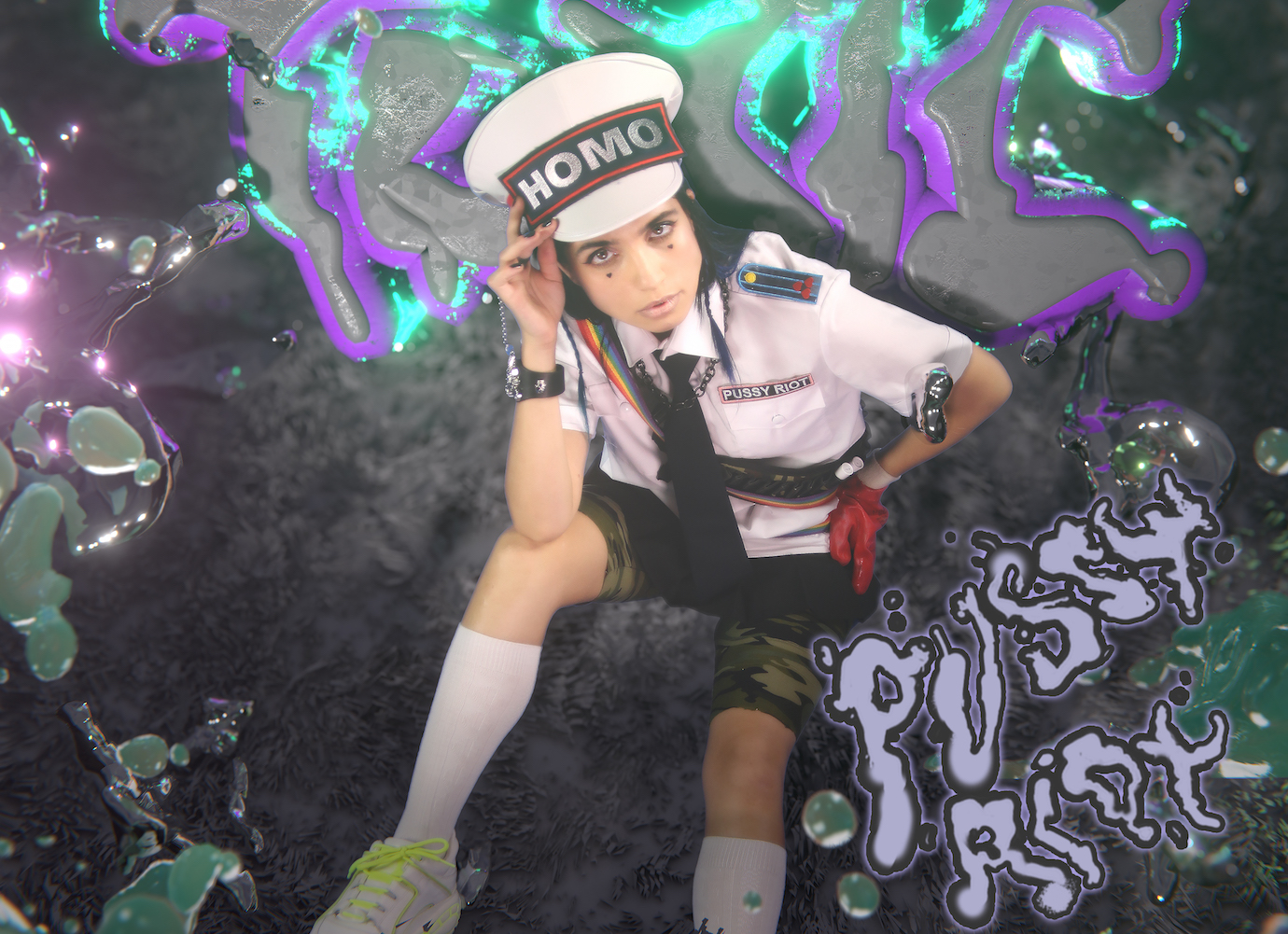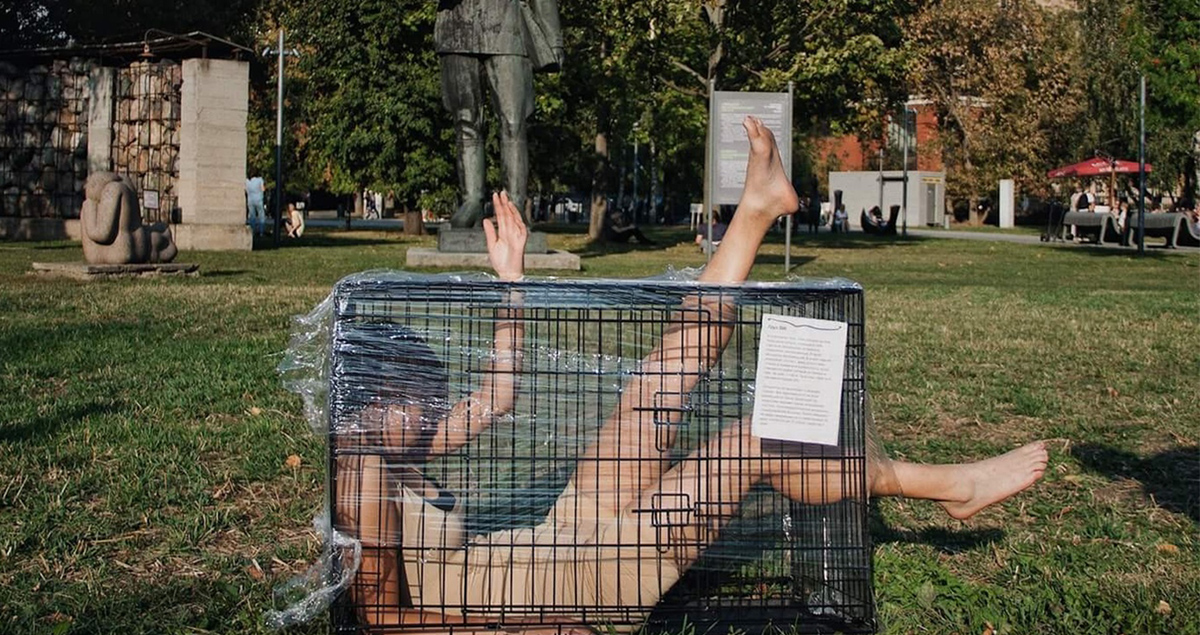Assessing Limonov, Russia’s most controversial writer

When the Russian writer, poet, and politician Eduard Limonov died in March last year, critics, journalists, writers, and academics struggled to assess his artistic and political output. The reactions ranged from glowing write ups and critical but appreciative appraisals, to brusque and damning dismissals on social media. His work as a novelist, once controversial among conservative Russian emigres for explicit depictions of homosexual sex, has not, recently, been the cause of his notoriety. Instead, it was Limonov’s decision, in the 1990s, to lead an unauthorised political party, The National Bolshevik Party (NBP), using both Nazi and communist imagery, that has continued to generate fascination and disgust.
Indeed, there has been a long history of artists, musicians, and writers flirting, perhaps cynically, with symbols on the political extremes to provoke, outrage, engage, and shock mainstream society. One can spot examples ranging from David Bowie’s Thin White Duke, Joy Division naming themselves after official brothels run in Nazi concentration camps after changing their name from Warsaw Pakt (the Eastern Bloc alternative to NATO), the cultural theorist Slavoj Zizek hanging a Stalin picture in his flat “to absolutely annoy people”, to the British punk band Fat White Family playing with Stalinist and Hitlerian imagery to shock viewers and question societal norms. However, Limonov took this provocative act one step further: pushing himself into the political arena of post-Soviet Russia.
But was Limonov truly using aesthetics to shock Russian society out of an ideological complacency after capitalism had replaced communism? Or was he simply a series of well-timed poses: modernist, disco-goer, punk, literary intellectual, cult leader?
Limonov was born Eduard Veniaminovich Savenko to working-class parents in February 1943 in Dzerzhinsk, near Nizhny Novgorod, before moving to Kharkiv in what was then the Ukrainian SSR. After a childhood of petty crime and poor grades at school, Limonov travelled to Moscow where he made avante-garde clothes for members of the Moscow creative class such as sculptor Ernst Neizvestny and poet Bulat Okudzhava. It was during this time that he changed his last name to ‘Limonov’ (lemon), a close cognate of Limonka: a nickname for the Soviet F1 hand grenade: an early example of his famed ability to strategically brand himself as a destructive outsider.
After a run-in with the KGB, Limonov left for New York in 1974 with his wife Yelena Shchapova. There they associated with various anti-Moscow Trotskyist groups and pioneers of the disco movement frequenting the short lived but influential nightclub Studio 54. Displaying a character trait that would come to define him in his later years, Limonov transformed himself alongside the burgeoning punk scene in New York’s lower-east side: trading in his flairs and long hair for a mohawk and minimal tailoring.
It was during this time, between 1975 and 1977, that Limonov wrote his debut and most famous novel, It’s Me, Eddie. An expletive-laden example of autofiction, it recounted Limonov’s life in New York as a recently divorced restaurant busboy struggling to stay above the poverty line. The novel was published in the west and smuggled into the USSR via samizdat. Controversially, at the time, Limonov included one of the first depictions of a protagonist engaging in homosexual and interracial sex in Russian emigre literature.
However, many have identified Limonov’s descriptions of homosexuality as a pose rather than a progressive identification: “It’s a self-promotional strategy, Limonov… wherever he is, is not with the majority,” says Andrei Rogatchevski, Professor of Russian Literature at The Arctic University of Norway and author of A Biographical and Critical Study of the Russian Writer Eduard Limonov (2003). “He writes his first book about his bisexuality, and that provokes a scandal…But when he moves to Paris, he signs a [sexist] book about his relationship with one of his wives, Natalia Medvedeva… For the same reason, the particular anti-feminist agenda that he pursues is calculated to create the maximum noise.”
One may see Limonov as the originator of a distinct dissenting tradition that continues to question dominant narratives about Russia coming from both the Kremlin and America
Limonov drew even more attention when he returned to Russia and entered politics in 1991, after the fall of the Soviet Union. While the West celebrated ‘the End of History’, as Francis Fukuyama called the start of a process whereby the whole world would slowly become liberal and democratic, Limonov scandalised everyone by setting up the National Bolshevik Party. The party protested against the “shock therapy” delivered to the Russian economy under Boris Yeltsin and the dissolution of the USSR’s borders. Yet, veering away from the left, the party would also come to support virulent forms of Russian nationalism — and revanchism — that drew on fascist politics and aesthetics.
While the NBP never gained political traction, its adoption of Limonov’s personal style and use of provocative poses and direct action would help create the foundations for the aestheticised Russian performance protests of Voina and Pussy Riot. Because Limonov took on so many poses, and was a cultural chameleon who changed with the times, those who came after him could ditch his particular politics while retaining dissident outsider tactics. For instance, Limonov’s aestheticised political campaigning in the 1990s and 2000s would influence the founder of the performance group Voina, Oleg Vorotnikov, who looked to: “Lenin and [Eduard] Limonov. No one else [being] radical enough.” A former Voina performer member, who split from Vorotnikov in 2009, Nadya Tolokonnikova would go on to found Pussy Riot in 2011. While the Western press has focused on Pussy Riot as prototypical liberal human rights activists, some academics have argued that the group share more with the National Bolshevik Party punk bands that circled Limonov in their commitment to “local forms and traditions of paradoxical humour and provocation”. Indeed, one may see Limonov as the originator of a distinct dissenting tradition that continues to question dominant narratives about Russia coming from both the Kremlin and America.
Yet the writer would betray his commitment to dissent as the Kremlin started to pursue foreign policy aims that aligned with his preferences for Russian revanchism. In his later years, while running the Other Russia party (the successor of the NBP), Limonov’s support for a greater Russia was to align with Putin’s annexation of the Crimea in 2014: for the first time he found his outsider pose co-opted by the establishment. The British documentary maker Adam Curtis claims that Limonov’s influence found its way into the Kremlin via his own approach to politics that inspired many of the government’s advisors. Among them, the ideologist Vladislav Surkov is credited for turning “Russian politics into [a] postmodern absurdist theatre” of shifting ideological performances, while the philosopher Aleksandr Dugin uses postmodern epistemological arguments to support the Kremlin.
Has Limonov just gone through multiple, contradictory phases? Or did his early work already offer a clue to his personality and motives? “Adolescent provocation, that’s the through-line,” says Karen Ryan, Professor of World Languages at Merrimack College and a scholar of Limonov’s work in the 1980s. “When he wrote It’s Me, Eddie, it was right before the fall of the Soviet Union — what he was doing in terms of provocation was not just political, it was also linguistic and literary. The inclusion of ‘mat’ (obscenities) was provocative among emigres and people in Soviet Russia.” Ryan argues that the root of Limonov’s controversial activity with the NBP can be seen in his early novels: “He is an oppositionist…It’s either the Soviet system, in Memoirs of a Russian Punk, or it’s the American system It’s Me, Eddie. The oppositional stance is there from the beginning.” Although Ryan states that, ultimately, Limonov’s literary potential was lost to his artistic self-fashioning and bigotry: “I became pretty turned off by his work… One of the things that I found hardest to take was his misogyny.” Adding that: “he became a parody of himself.”
However, Yngvar Steinholt, Professor of Russian Literature and Culture, at the Arctic University of Norway, argues that: “one way of understanding what Limonov was doing is through the concept of late Soviet irony — what the anthropologist Alexei Yurchak calls “stiob” (taking the piss). The point is to over-identify with something provocative: for as long as people cannot decide whether you mean it, or whether you’re just doing it to provoke, you have power over them.” The use of stiob, and the commitment to provocative poses, can also be seen among contemporary Russian performance artists and actionist-artists. For instance, Voina’s mock hangings in supermarkets, staged orgies, and drawing of a penis on Liteyny Bridge in St Petersburg all apply a mischievous sense of stiob.
Limonov’s particular brand of ambiguous stiob found its way into American culture, after he returned to Russia, and took up writing for the English-language The eXile which catered to an ex-pat audience in Moscow. The eXile set out to mock the hedonistic lifestyles afforded to westerners in Russia, during the 1990s, through macho-posturing and explicit sex scenes but also via absurd depictions of Putin’s Kremlin. There is still debate today as to whether Limonov, and his fellow American journalists Matt Taibbi and Mark Ames, were writing about real misogyny or taking on an ironic satirical pose.
By maintaining his connections across demographics and playing both sides, Limonov managed to find influence among marginal groups and underground artistic movements too
Even more controversial and far less ambiguous is the instance of Limonov appearing in Pawel Pawlikowski’s Serbian Epics (1992) alongside war-criminal Radovan Karadžić. During a scene above the besieged city of Sarajevo, Limonov is pictured shooting an automatic machine gun at buildings. In Serbian Epics, the pose of macho outsider, raconteur, and provocateur became a reality: going beyond any pretence at stiob. This would help him find followers outside the literary avant-garde where he was established, drawing in nationalist young men and gang members.
However, by maintaining his connections across demographics and playing both sides, Limonov managed to find influence among marginal groups and underground artistic movements too: from the Pop Mechanics movement of Sergey Kuryokhin to the LGBTQ artist Slava Mogutin. Both macho and queer aesthetics could be used as stiob — to provoke and confuse — and to claim power for the artist.
An example of Limonov “playing both sides” can be seen in his interest in gender non-conformity and dandyism. In an early edition of the NBP’s newspaper Limonka, andrognynous male models were dressed in female clothing. “He tended to always want to be on the wrong side,” says Fabrizio Fenghi, Assistant Professor of Slavic Studies, Brown University and author of It Will be Fun and Terrifying: Nationalism and Protest in Post-Soviet Russia, (2020). “In that sense, there is a continuity between the queer gender-ambiguous performance of his early literature (and the involvement Slava Mogutin in Limonka) and the later hyper-masculine cult of war he developed.”
This ambiguity, and Limonov’s pose as both a hard man and dandy aesthete, would find its way into his politics. For instance, after working with left-wing groups during the 1993 constitutional crisis, Limonov and the NBP allied themselves with a liberal capitalist movement led by the chess prodigy Garry Kasparov. “I was in Moscow between 2007 and 2011, when I met Limonov, it was at the marsh nesoglasnykh (Dissenter’s March 2006–2007) — a series of protests against the Kremlin,” says Luke Harding, a Guardian foreign correspondent and former Moscow bureau chief who often interviewed Limonov at protests. “He thought of himself as an intellectual,” Harding argues, “but [his game] seemed to me to be about the performative and theatrical politics of resistance. There were demonstrations in Pushkin Square where [the NBP] would stick banners out of crumbling 19th-century stucco buildings.” Harding asserts that Limonov’s self-promotion and aestheticism became a handicap for the marsh nesoglasnykh: “I think [he] did a disservice to anti-Putin politics…it was difficult for Kasparov because he was trying to fill a space where there should have been a pro-western Russian opposition and it was made impossible by Limonov.”
What remains constant is the ambiguity of Limonov’s commitments, both aesthetic and political
This period of uneasy alliance between Limonov and Kasparov, as well as the paranoia caused by constant Kremlin surveillance, was captured by the documentary filmmaker Alyona Polunina in her films Yes, Death! (2004) and The Revolution that Wasn’t (2008). Both of Polunina’s films show how many young people in Russia were taken in by a political programme concerned with performance, action, and spectacle. “He had a physical attitude towards politics… he didn’t care about theory and wanted action, leather jackets, and weapons,” says Fenghi. Indeed, every shot of Limonov in The Revolution that Wasn’t is aesthetically composed: he comes across less like a politician, and more a charismatic cult leader, wandering around snowy alleyways clad in black. And yet, the 2008 presidential elections, which the documentary covers, are a landslide for Putin’s ally Dmitry Medvedev. Performative politics led Limonov to defeat and irrelevance within the Russian power structure. As Harding contends: “when the history of the current regime is written, I don’t think Limonov and the National Bolsheviks will be more than a footnote.”
Yet, within Russia, Pussy Riot, although radically politically distinct from Limonov’s NBP, still cite the writer as an artistic influence, employ National Bolshevik aesthetics satirically in their music videos, and undertake direct action methods, such as those used in A Punk Prayer (2012) to provoke the Kremlin. The use of stiob and provocative poses have found their way into progressive movements that have positive political platforms. It certainly can be argued that Limonov’s cult of masculinity and his avoidance of religious provocation against the Orthodox Church implicitly helped support the values that the Kremlin has promoted to the Russian people and weakened his own anti-system stance. For Harding, Pussy Riot attacked the social dogmas of the Kremlin, not just its politics, because: “they’re young women, and unlike Limonov, they are not just anti-system but also anti-church.”
However, others warn against trying to fit either Limonov or later Russian dissidents into Western political paradigms narrowly concerned with social progress. For instance, in reaction to obituaries in the American press, journalist Yasha Levine argues that we should take Limonov seriously as a dissident political figure who was outside the norms of West: “from the New York Times down to Jacobin — [they are all] trying to interpret and explain this radical Soviet writer and dissident through their provincial and puritanical and smugly comfortable suburban worldview….[they] didn’t like his liberal bashing and his anti-oligarchic, anti-privatisation politics.”
What remains constant is the ambiguity of Limonov’s commitments, both aesthetic and political. As Rogatchevski reminds us: “all this has been done to promote his art, his publications and his books. So the question is, do you promote them better by being a countercultural figure who has unpopular and provocative views? Or do you promote them better when these views coincide with the ruling party?”
Limonov has achieved widespread influence as an aesthetic provocateur who was able to shape himself to fit the moment. How committed he actually was to the politics of National Bolshevism — or indeed Putinism — is a question that has not been answered. However, Limonov’s distinct strategy of visual provocation will live on among Russian direct action artists long after his problematic literary and political influence become irrelevant. The debate, as to whether this particular brand of post-modern Russian protest, concerned with personality and symbols over ideological commitment, is a good thing, is still very much open. Indeed, if protest is only concerned with a performative pose, and not substantial opposition, its own strategies can be used and performed by those it demonstrates against. Perhaps Limonov’s greatest blindspot is that his personality-driven inconsistency, relativism of political value, and aestheticisation of power are also techniques adopted, or appropriated, by repressive post-modern politicians within the system he claimed to hate.


